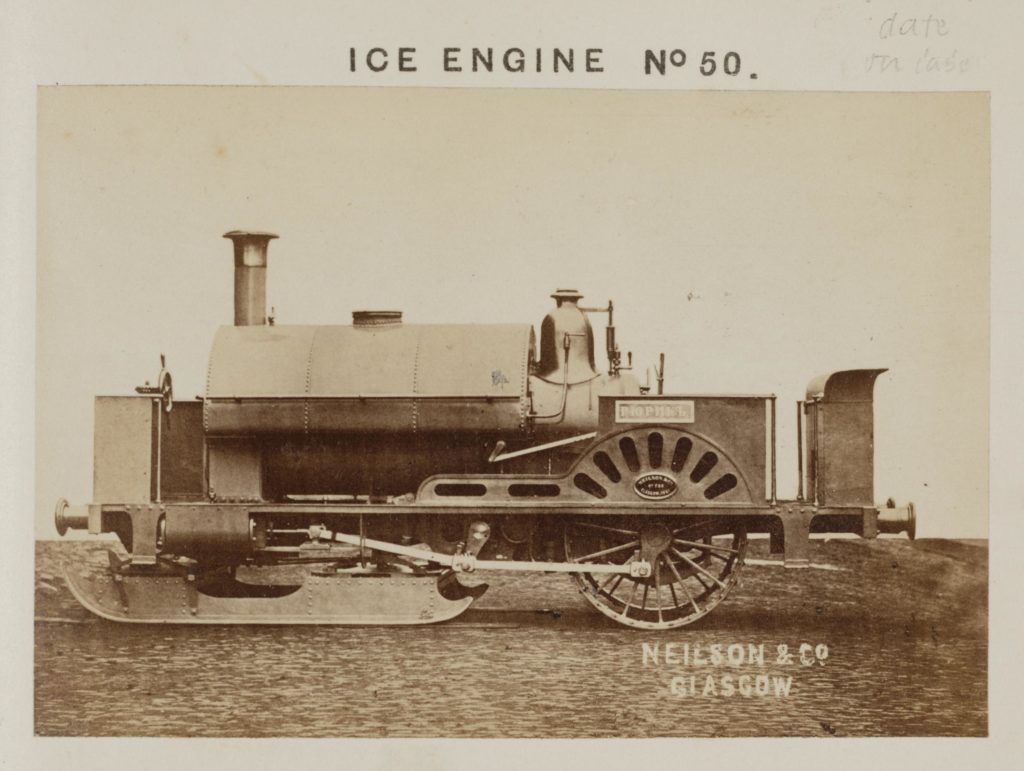There are around a million engineering drawings in the National Railway Museum’s archives. They are a captivating window upon every aspect of railway history from the dawn of the age of steam to the end of the 20th century. Among the drawings you can find many famous subjects, including locomotives like the LNER’s A3s (including Flying Scotsman), the LMS’s Duchesses and the GWR’s Kings. However, equally interesting are the drawings for some not-so-famous, weird and wonderful railway creations. They are long-forgotten experiments in technologies that failed to prove their worth or illustrations of the unexpected parts of society where the railways extended their influence.
To celebrate the publication of the new book Railways: A History in Drawings by Christopher Valkoinen, we are bringing you a new series of blog posts delving into the stranger subjects of our drawing collection. It will be a true cabinet (maybe that should be a planchest?) of curiosities. We are starting with one of our favourites: the ice locomotive!

The ice locomotive is an unusual beast. At first glance, it shares many similarities with a regular steam locomotive; a firebox where fuel is burnt, a boiler where water is heated into steam, cylinders that use the steam to turn a wheel, a footplate where the driver and fireman do their work, a chimney for the steam and smoke, and tanks full of water slung over the boiler like a saddle (just like a saddle tank engine). Here though the similarities end because this engine is equipped with two very unusual features: a steering wheel and a set of skis. This locomotive did not run on rails—it ran on ice.
So, what is the story behind this strange little engine and why is there a drawing of it in the National Railway Museum archives? In early 1860s Russia, transport infrastructure was limited. Roads were poor and only a few railways had been built to link the largest cities. Most transport was by river and when the rivers froze in winter that entailed the use of horses and sleds. Nathaniel Grew, a British engineer who worked on projects around the world, had a simple idea to replace the horses with a steam engine that could haul a whole train of sleds on Russia’s frozen rivers.

The drawing here is for Rurik, the second of two engines exported to Russia in 1861 where it ran on the frozen River Neva between St Petersburg and the naval base at Kronstadt. Once it arrived in Russia a wooden cab was built on the engine to protect the enginemen from the elements. It ran successfully for at least one winter season, but what happened to the ice locomotives after that is unknown.

The drawing is part of the North British Locomotive Company collection which includes the records of Neilson & Co, a railway locomotive builder in Glasgow that also constructed the ice locomotive. Over 120 years, Glasgow’s locomotive manufacturers built around 26,000 locomotives, many of which were exported to countries all over the globe. Rurik was just one of them, although it was probably the strangest engine to emerge from the city.
Railways: A History in Drawings by Christopher Valkoinen is published by Thames and Hudson and is available for all good bookshops. Find out more about our drawing collections.


This is fascinating. Can I sign up to receive links to these NRM blogs as they are published?
While working as a curator at the NRM I wrote a series of articles for the Friends Magazine on the development of Ice Locomotives